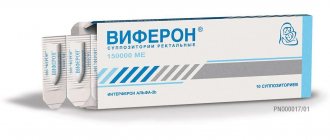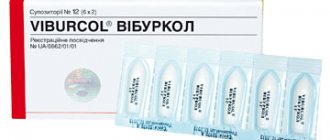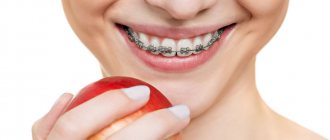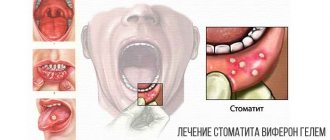From the end of 2021 to the present day, the attention of the entire healthcare system and the world community as a whole has been focused on one big problem - the spread of a new coronavirus infection, which WHO has characterized as an emergency of international concern. One of the most important questions that has arisen for doctors is how to treat covid-19 in adults and children. We talked about this with the head of the Department of Children's Infectious Diseases of the Krasnoyarsk State Medical University, the chief specialist in infectious diseases in children of the Ministry of Health of the Russian Federation for the Siberian Federal District and Krasnoyarsk Territory, Doctor of Medical Sciences, Professor Galina Petrovna Martynova.
-Galina Petrovna, tell us what difficulties practitioners have encountered during the pandemic.
-Coronaviruses are a large family of viruses that can infect humans and some animals; they have been known to us since the 60s of the last century. Until 2002, coronaviruses were considered to be agents that caused mild upper respiratory tract disease. However, in 2002, a highly pathogenic strain of SARS-CoV was discovered, which caused an epidemic of SARS, and 10 years later - MERS-CoV. Therefore, the appearance of another representative of the alphacoronavirus SARS-CoV-2 in December 2021 in the city of Wuhan (PRC) did not initially cause much concern. But today it is already absolutely clear that COVID-19 is a completely new infection that has swept the whole world and has posed a number of diagnostic and treatment challenges for medical workers.
Particularly great difficulties in providing medical care to patients occurred at the beginning of the pandemic, when the scale of the spread of the new coronavirus infection COVID-19 became obvious. The therapy was prescribed, essentially, off-label due to the lack of reliable evidence of the effectiveness and safety of certain medications prescribed to patients. But today, a sufficient amount of information has been accumulated about the epidemiology, clinical features, prevention and treatment of this disease, a number of clinical studies have been conducted that have confirmed the effectiveness and safety of a number of drugs that can be used in the treatment of COVID-19 in adults and children.
-There is an opinion that children practically do not get sick from COVID-19. How susceptible are they to infection?
-Children are susceptible to SARS-CoV-2: according to statistics, they make up 5 to 7% of those infected with the new coronavirus infection. However, compared to adults, children have a milder form of COVID-19. Only 10% of infected children require hospitalization, and only 1% develop severe disease.
In most cases, the new coronavirus infection COVID-19 in children occurs as a mild form of acute respiratory infection, but at the same time, despite the absence of pronounced symptoms of intoxication, physical and auscultatory changes in the lungs, 20–50% of children develop pneumonia (according to computed tomography of the chest).
It is noteworthy that, along with the new coronavirus infection, today there is a traditional seasonal increase in morbidity caused by other respiratory viruses: rhinoviruses, respiratory syncytial virus, adenovirus, influenza virus and parainfluenza. But the seasonal rise of ARVI in modern conditions is, of course, unusual: it occurs against the background of an ongoing pandemic, when, due to the great similarity of clinical manifestations, it is very difficult to determine which virus (or viruses) caused the disease, especially in an outpatient setting. That is why a rational approach to the treatment of a new coronavirus infection in children, according to experts, is carried out in accordance with the basic principles of the treatment of acute respiratory viral infections.
It should be taken into account that respiratory viruses, including coronavirus, are capable of mutating, changing their antigenic structure, and developing resistance to a number of direct antiviral drugs. Let's take the influenza virus as an example, for which powerful antiviral drugs have been created that have a convincing evidence base. At the same time, today more than 40% of influenza virus strains are insensitive to Rimantadine and other amantadine drugs. There is evidence of the emergence of influenza virus strains resistant to first-line drugs - neuraminidase inhibitors, in particular Oseltamivir. And this only applies to the flu. But we cannot exclude the possibility of combined damage to the respiratory tract, when the disease is caused by several viruses at once, which, of course, greatly complicates the choice of antiviral therapy.
In this regard, in the treatment of respiratory viral infections, it became necessary to use drugs that act not on specific viral proteins, but on the immune mechanisms of antiviral defense. In this situation, the drugs of choice for the treatment of acute respiratory viral infections of various etiologies, including the new coronavirus infection COVID-19, are recombinant interferon drugs.
-Some experts believe that the body needs enough endogenous interferon. How valid is this opinion?
-Unfortunately, this is not entirely true. Of course, viruses are powerful stimulators of the production of endogenous interferon, which does not depend on the taxonomic properties of the pathogen and will continue throughout the period of its replication. From the moment the pathogen comes into contact with the epithelium of the mucous membranes of the respiratory tract, active induction of endogenous (internal) interferon begins. However, this does not mean that its concentration is sufficient for reliable protection against infection, including the new coronavirus infection. In young children, especially newborns, infectious and inflammatory diseases reduce the body's ability to produce interferon alpha and gamma, which reduces the effectiveness of the body's defenses, including local immunity.
Moreover, the results of experimental and clinical studies of our European colleagues indicate that SARS-CoV-2, unlike other respiratory viruses, suppresses the synthesis of its own interferon in the body. When the immune system is weakened, viruses escape the immune mechanisms, the disease prolongs, and complications develop that can even cause an unfavorable outcome. In connection with the above, it is logical in this situation to use recombinant interferon drugs in pediatric practice, the antiviral, immunomodulatory and antioxidant activity of which has been demonstrated in numerous clinical studies. Recombinant interferon-α-2b preparations are effective against infections of various etiologies (viral and bacterial) and localizations (diseases of the respiratory and gastrointestinal tract, nervous and urinary systems, congenital infections). It is important that interferon preparations can be used in patients of completely different age categories: children, including newborns, adolescents, adults, including pregnant women and the elderly. Therefore, the range of indications for the use of recombinant interferon drugs is very wide, without any exaggeration.
The leader among recombinant interferon-α-2b drugs, of course, is VIFERON®, the therapeutic and preventive effectiveness of which has been proven in numerous studies in patients of different age groups with different health conditions. Our clinic also took part in studying the effectiveness and safety of recombinant interferon drugs in the treatment of children with the new coronavirus infection COVID-19.
-Why did VIFERON® become the object of research?
-First of all, because VIFERON® has convenient release forms for children's practice - suppositories (they act systemically, that is, on the entire body as a whole), as well as gel and ointment (they act locally, at the site of the lesion). When applied topically, interferon prevents the fixation and multiplication of viruses at the site of their introduction, thus creating an obstacle for them: the virus cannot penetrate the cell, it has nowhere to multiply. Therefore, local gel or ointment forms can be successfully used not only for treatment purposes, but also for effective prevention.
Administration of recombinant interferon-α-2b from the moment the very first symptoms of the disease appear suppresses viral replication. It is not surprising that not only in Russia, but also in Europe, there is currently an active study of the use of recombinant interferon drugs in the treatment and prevention of the new coronavirus infection COVID-19.
-Tell me more about the study in which you participated.
-The study was conducted in three research centers where hospitals were deployed to treat children with COVID-19: in Moscow, Krasnoyarsk and Kazan. The purpose of the study was to study the effectiveness of interferon-α-2b in high doses. After all, SARS-CoV-2 blocks the production of endogenous interferon, and therefore it is advisable to administer high doses of recombinant interferon-α-2b.
The study involved 140 children aged 1 to 17 years, who were divided into two age groups. The first - children from 1 year to 7 years old who received recombinant interferon-α-2b (VIFERON®) in the form of rectal suppositories as etiotropic antiviral therapy in the form of rectal suppositories at a dosage of 1,000,000 IU 2 times a day in combination with VIFERON® Gel 5-6 times per day locally (on the nasal mucosa).
The second group - children from 8 to 17 years old, received rectal suppositories VIFERON® 3,000,000 IU 2 times a day in combination with VIFERON® Gel topically 5-6 times a day.
The control group consisted of 70 children who received the drug with direct antiviral action “Umifenovir” as antiviral therapy in a therapeutic dosage in accordance with the age of the child.
Clinical effectiveness was assessed by reducing the severity of clinical symptoms of the disease: relief of fever, cough, nasal congestion, rhinorrhea, abdominal pain, restoration of the mucous membranes of the eyes, normalization of smell and taste. The study examined the dynamics of coronavirus isolation, the level of IgM and IgG antibodies to SARS-CoV-2 in the blood serum, which allows us to assess the rate of formation of the immune response.
-Can we already talk about the results of the work?
-Yes, the study is almost completed, and its results showed positive dynamics during therapy in patients of the main and control groups. At the same time, it should be noted that in patients of the main group receiving combination therapy with recombinant interferon-α-2b drugs (VIFERON® Rectal Suppositories and Gel), the relief of clinical symptoms of the disease occurred significantly faster compared to children in the comparison group.
Children in the main group developed antibodies to SARSCoV-2 in their blood serum significantly faster (first IgM and then IgG) compared to participants in the control group. This confirms the fact that the immune response to the new coronavirus with the use of recombinant interferon in high doses in a combined regimen was formed more quickly compared to therapy with a direct antiviral drug. Of course, this was reflected in the duration of clinical manifestations of the disease and shortened the length of stay of children in the hospital.
I would like to note that among the patients in the control group there were children (as a rule, teenagers with damage to the lower respiratory tract, pneumonia), who, on the 8th–9th day from the date of prescription of antiviral therapy with Umifenovir, still had clinical manifestations of the disease, in control smears from SARS-CoV-2 continued to be released from the nasopharynx. Prescribing patients a second course of antiviral therapy with recombinant interferon-α-2b drugs (rectal suppositories and gel) led not only to the relief of clinical symptoms of COVID-19, but also to the sanitization of the body from the virus; already on the 5th–7th day the virus was found in smears from the nasopharynx was not determined.
-That is, the use of interferon drugs reduces the period of virus shedding?
-Yes, when using the drug VIFERON®, sanitization of the body occurred faster: in nasopharyngeal swabs in more than half of the children, the virus was not detected already on the 5th–7th day (using the PCR method), unlike the children in the control group. Moreover, its use made it possible to reduce the period of virus isolation from feces, although, according to the literature, virus isolation from feces occurs over a longer period of time compared to its isolation from the mucous membranes of the nasopharynx.
We analyzed the results of a stool PCR study for SARS-CoV-2 in children with a new coronavirus infection, dividing them into three groups. The first group of patients received Umifenovir as antiviral therapy, the second group received VIFERON® in standard low dosages, and the third group received VIFERON® in high dosages (these were children who participated in our study). During therapy, patients in three groups underwent stool testing for SARS-CoV-2 using PCR at the beginning of therapy and at the end of it, on days 11–13. The results showed that with the use of the drug VIFERON®, the release of the virus in feces ceases significantly faster compared to children receiving Umifenovir. Moreover, a relationship was identified between the dose of interferon and the period of virus shedding: in the group of children receiving high dosages of the drug VIFERON®, this period was shorter than in children receiving standard dosages.
Thus, we are talking not only about the clinical effectiveness of recombinant interferon-α-2b with antioxidants in the form of rectal suppositories and gel for external use in the treatment of a new coronavirus infection, but also to a significant extent in reducing the time of viral replication and ongoing viral shedding. This is very important, since the release of the virus into the environment is the cause of the spread of infection. A patient who no longer has clinical symptoms of the disease may consider himself healthy, but in fact may continue to release the virus into the environment, remaining a potential source of infection.
-Can interferons be used to treat adult patients?
-Yes, we studied this issue as well. Many children are hospitalized with mothers who, as a rule, are also sick with coronavirus infection. Most often, they were prescribed Umifenovir as antiviral therapy, but in some cases, despite the therapy, women continued to isolate the virus in nasopharyngeal swabs. In such situations, VIFERON® was recommended, which demonstrated positive results.
Research data and clinical experience confirm that recombinant interferons, in particular VIFERON®, in systemic (suppositories) and local (gel or ointment) forms are advisable to use for the treatment of acute respiratory infections, including coronavirus infection in both children and adults .
Original publication: https://viferon.su/vestnikferona_sp_2020_2/
Author: Marina Izvarina
Interested in the article? You can find out even more in the Expert Opinions section
What does Viferon help with?
The ointment is prescribed for use in cases of damage to the skin and mucous membranes, which is caused by the action of various viruses.
The gel is recommended to be taken for the prevention and treatment of acute respiratory infections in children.
Candles are prescribed for the following conditions and diseases:
- pathologies that are caused by inflammatory and infectious processes (can be used from the first days of babies’ lives);
- chronic viral hepatitis;
- pregnant women who have been diagnosed with urogenital infections;
- ARVI, flu and various colds.
Before use, be sure to consult a doctor.
Indications for use
Viburkol is used to cleanse the body of toxic substances and stimulate active immunity. These suppositories, like Viferon, are characterized by analgesic properties.
These medications help improve the functioning of the central nervous system. Viburkol is used as an antipyretic for infectious pathologies. The drug quickly eliminates:
- catarrhal phenomena;
- cramps in the stomach;
- sleep problems;
- unreasonable anxiety;
- fever;
- intestinal colic.
Viburkol is often included in the therapeutic regimen for influenza, mumps and chickenpox.
Viferon is prescribed if the child has a history of the following diseases:
- Acute viral infections.
- Infectious and inflammatory pathologies of the excretory system.
- Meningitis, intrauterine infection, blood poisoning.
How to use Viferon suppositories for children
Candles are often given to newborns and babies who were born ahead of schedule. The drug in combination with specific treatment is taken depending on the existing infectious disease.
The course of therapy lasts 5 days. Use 1 suppository per day 2 times a day with the same time interval.
Premature babies whose gestational age is 34 weeks are given 1 suppository three times a day.
For acute respiratory viral infections and influenza, children may require 2 treatment courses. If the infection is associated with the herpes virus, then 2 courses of therapy will be required.
To put a suppository on a newborn, you need to place the baby on an oilcloth sideways, with his legs tucked under his tummy. It is better to use candles after bowel movements.
Contraindications
Viburcol is strictly prohibited for use if you are hypersensitive to the ingredients of the medicinal composition. During pregnancy, the drug is not recommended for use without doctor's prescription. The same goes for women who are breastfeeding. Viburkol is allowed to be taken together with other antiviral medications. The risk of negative consequences is minimal.
In this respect, Viferon differs significantly from Viburkol. It can provoke the development of negative clinical manifestations. The medication should be avoided by patients suffering from the following pathologies:
- hypersensitivity;
- chronic hepatitis;
- cardiovascular diseases;
- disruptions in the functioning of the nervous system;
- partial dysfunction of the kidneys and liver;
- epilepsy.
Taking Viferon is contraindicated for minors, pregnant women, and nursing mothers. The drug should not be included in the drug regimen together with immunosuppressants.
The main differences between the drugs
Medicines are characterized by a similar spectrum of action. The difference between Viburkol and Viferon lies in the composition, list of side effects and release forms. Viburkol is sold only in the form of rectal suppositories, while Viferon can be purchased in several varieties. The choice is made based on the nature of the pathological changes.
Suppositories are available in white, may have a yellowish tint and have a torpid shape. The diameter of the candle does not exceed 10 mm. The ointment is most often used topically. It is characterized by a homogeneous structure and a rather specific aroma. Viferon gel has a uniform and opaque concentration, as well as a grayish tint.
Viburkol is classified as a complex type of homeopathic medicine, and Viferon is classified as an immunomodulatory medicine of synthetic origin. Such drugs reduce the load on the liver. Viburkol gradually reduces body temperature without affecting the process of interferon activation, thanks to its antispasmodic and sedative properties.
General characteristics
There are the following similarities between Viferon and Viburkol:
- Both medications can be purchased without a doctor's prescription .
- The drugs do not slow down the reaction rate , so they can be used by drivers and patients working in potentially hazardous industries without any restrictions.
- To date, there have been no cases of overdose with these medications.
- Both drugs cannot be used if their composition is intolerant, in which case they can cause allergies. If signs of an allergic reaction appear, you should interrupt therapy and consult a doctor.
- Viferon and Viburkol can be used in combination with other medications .
- Both drugs were well tolerated.
In what cases is Viferon used?
Viferon is used in complex therapy of acute respiratory diseases, incl. flu; for disorders of the nervous system. The drug is an immunomodulator, increasing the level of human immunity. In childhood, Viferon is allowed for use from the first days of life, during pregnancy (from 14 weeks), and can be used during breastfeeding.
The use of Viferon from the first days of the disease significantly accelerates the patient’s recovery process.
Advantages of suppositories:
- mild effect on the body;
- no side effects;
- do not contain preservatives or dyes, which is the optimal solution for treating young patients and children with allergies;
- convenient form of administration.
Viferon is prescribed for the treatment of acute respiratory viral infections in adults and children . Its active ingredient is interferon. Auxiliary components, ascorbic acid and vitamin E, help reduce inflammation and rapid regeneration of damaged cells. Viferon suppositories for children vary depending on the amount of active ingredient. The selection of a treatment regimen and the choice of drug is carried out by the doctor on an individual basis.
Is it possible to take Viburkol together with Viferon? The action of the first drug is anti-inflammatory; it is used to reduce temperature in various types of febrile conditions. Viferon fights viruses that have entered the body. Therefore, it is possible, but with an interval of at least 30 minutes.
In addition, Viferon can be used not only during the acute phase of the disease, but also at the prevention stage during the cold season, providing a pronounced antiviral effect.
If we compare Viferon with Viburkol, both drugs are safe for use, which is why they are widely used in the treatment of colds in children.
Active Ingredients
Viburkol is a homeopathic remedy. It contains extracts of the following plants:
- pharmaceutical chamomile;
- meadow lumbago;
- belladonna;
- plantain;
- nightshade.
Healing extracts are combined with solid fat and calcium carbonate. All of these components are characterized by relative safety.
Viferon contains recombinant alpha-2b. This component is the main one, it is supplemented with auxiliary ingredients. Suppositories include fat, cocoa butter, ascorbic acid, polysorbate 80, sodium ascorbate.
The external gel also contains alpha-tocopherol acetate. In addition to this, the following is added to the drug:
- purified water;
- ethanol;
- benzoic acid;
- citric acid monohydrate;
- distilled glycerin;
- sodium tetraborate decahydrate;
- sodium chloride.
The main ingredient is characterized by a wide spectrum of action and the ability to suppress the replication of DNA and RNA viruses. Thanks to interferon, it increases the cytotoxicity of white blood cells and activates antibacterial protection.
Alpha-tocopherol acetate and vitamin C have antioxidant, restorative, membrane-stabilizing and anti-inflammatory effects. Cocoa butter, which together with confectionery fat provides structure, contains phospholipids and polyunsaturated fatty acids.
Side effects
If Viburkol is used incorrectly, the clinical picture may include symptoms such as itching, rashes on the skin, and increased body temperature. These signs may be caused by individual intolerance to the drug composition. The risk of unpleasant manifestations is quite small. Despite its relative safety, the drug is not recommended to be taken without consulting a doctor. Viferon can provoke the development of an allergic reaction. Its symptoms disappear 3 days after stopping the use of the medication. It combines well with other medications.
If the patient has contraindications to the use of Viburkol, the doctor may prescribe the following analogues:
- Ibuprofen;
- Calpol;
- Rapidol;
- Cefekon;
- Nurofen;
- Paracetamol.
Viferon is replaced by Interferon, Laferobion, Laferomax, Jenferon and Nazoferon. Each of these medications has its own positive and negative properties, so an analogue must be selected by a doctor.
Which drug to choose
The medication is chosen taking into account the diagnosis, stage and individual characteristics of the patient. The selection of the drug should be carried out by the attending physician. Interferon alpha-2b, which is part of Viferon, is obtained by hybridizing the genome of white blood cells and bacterial plasmids. Protein compounds are characterized by high solubility.
The reasons for using Viburkol are:
- complex treatment of ARVI;
- nervous overexcitation;
- uncomplicated infections;
- inflammatory process in the ENT organs;
- pathologies of the excretory or reproductive systems.
If side effects occur, you should immediately consult a doctor.
He will reduce the daily dose of the medication or replace it with an analogue. The procedure depends on the intensity of clinical manifestations.
Viferon
recombinant α-2b human interferon as an active substance . The drug relieves inflammation, improves immunity, has antiproliferative and antibacterial properties, and disrupts the replication of RNA and DNA viruses.
The drug enhances the phagocytic activity of macrophages and increases the specific cytotoxicity of lymphocytes to target cells.
The auxiliary components included in the drug enhance the antiviral effect of interferon and increase the patient’s immune response to pathogens.
During treatment with the drug, the content of immunoglobulin class A increases and the concentration of immunoglobulin E normalizes.
Vitamins C and E , which are included in the medicine as auxiliary components, are natural antioxidants; they stop the inflammatory process and accelerate the healing of damaged tissues.
The use of Viferon in combination with other medications allows you to reduce the dosage of antibiotics and hormones, as well as reduce the toxic effects of them.
Regardless of the form of release, the drug is prescribed for herpes, and in combination with other drugs it is prescribed for ARVI, including influenza.
Suppositories are prescribed for the treatment of the following diseases:
- Inflammation of the lungs caused by viruses, bacteria or chlamydia.
- Infections of newborns, including premature babies, such as viral and bacterial meningitis, blood poisoning, intrauterine infections of various etiologies.
- Chronic viral hepatitis B, C, D, including those complicated by cirrhosis.
- Infections of the genitourinary canal.
The gel can be used in combination with other drugs for the treatment of stenosing laryngotracheobronchitis, and it can also be used to prevent this disease.
In addition, the gel is prescribed for the prevention of acute respiratory viral infections.
What to choose?
It is not very correct to compare Viferon and Viburkol, since the medications have different compositions and areas of application . Therefore, which remedy is best for a particular patient should be decided by the doctor, depending on the diagnosis , the age of the patient, the presence of contraindications to the start of therapy and its tolerability.
If necessary, the doctor can prescribe these medications in combination, since their actions complement each other.
Medicine and healthComment
Principles of application
Viburkol is a homeopathic medicine and is quite popular among the population. They do not cause dependence, withdrawal symptoms or addiction. Suppositories normalize the functioning of the digestive system, eliminate spasms and problems with gas formation. The course of treatment can last for 10 days, including when treating newborns. It is recommended to take the suppositories at night, this will enhance the positive effects. The drug can be used to relieve unpleasant symptoms after immunization. The dosage and order of administration are determined by the doctor. It is strictly prohibited to prescribe a therapeutic regimen on your own.
Viferon ointment is approved for use to eliminate herpetic lesions and catarrhal symptoms in children over 1 year old. The gel is prescribed for preventive and therapeutic purposes. Suppositories are used as an aid in the treatment of infectious pathologies, generalized myeloma, hairy cell leukemia and bladder cancer. Basal cell carcinoma, condylomatosis acuminata, meningeal form of tick-borne encephalitis, and Sézary syndrome are added to this list. The therapeutic course is carried out in full accordance with the doctor’s instructions. The treatment regimen is selected taking into account the nature of the clinical manifestations, general well-being and individual characteristics of the patient.
Differences
Viferon and Viburkol have the following differences:
| Viferon | Viburkol | |
| Manufacturer country | The medicine is produced in Russia. | The drug is produced in Germany. |
| Release form | The drug is available in rectal suppositories, ointments and gels. | The homeopathic remedy comes in suppositories inserted into the anus. |
| Use during pregnancy | Ointment and gel can be used at any stage of pregnancy. Rectal suppositories are allowed to be used only from the 14th week after conception. | The medication is intended for children. |
| Use during lactation | The drug can be used by women who support breastfeeding without any restrictions. | The drug is intended for children. |
| Use in pediatrics | Gel and suppositories can be used from the first days of life. The ointment is contraindicated for children of the first year of life. | The homeopathic remedy can be used from birth. |
| Adverse reaction | When applying ointment to the nasal mucosa, it can cause a runny nose, sneezing and burning. These adverse reactions are mild, they go away on their own and do not require discontinuation of therapy. | Suppositories can cause stomach upset. Diarrhea can affect 1 in 10,000 children. Also, when using a homeopathic medicine, the symptoms of the disease may worsen; in this case, you should urgently consult a doctor. |
| Storage rules | The drug should be stored at a temperature of 2-8 degrees. The shelf life of rectal suppositories is 24 months, and ointments and gels are 12 months. | Candles should be stored in a dry, dark place at a temperature of 15-25 degrees for 36 months from the date of issue. |









